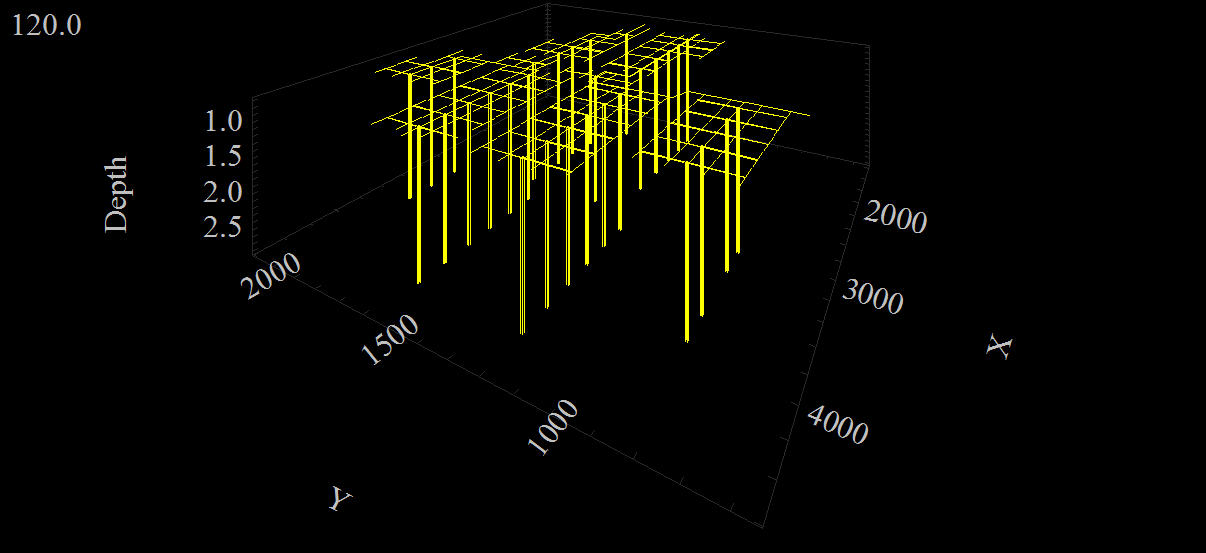ETAP Ground Grid
List of Keyword
- Step Potential: The foot-to-foot open circuit voltage in the event of a ground fault.
- Touch Potential: The hand-to-foot open circuit voltage in the event of a ground fault.
- Mesh Potential: The highest touch voltage felt when touching a ground object while standing inside a ground grid mesh.
- Ground Current: The current that flows into a grounding system.
- Ground Potential Rise, or GPR: The voltage between a grounding system and a distant earth during a ground fault.
- Remote Earth: A potential reference point that is far enough away from the fault to see very little potential rise.
- Ground Grid: An interconnected network of subterranean wires that facilitates communication with the soil underneath.
- Ground Rod: A vertical rod that is to let fault currents move from the ground grid to the deeper soil layer in the earth underneath.
The Equation
To calculate the cross-sectional area of the conductor, then use the above equation. For the parameter that should be input to the equation, use the below parameter:
- The earth grid conductor's dimensions are designed to accommodate the highest earth fault current without causing the conductor to collapse.
- In the equation above, the current value referred to is the maximum three-phase short-circuit current simulated, depending on the grid used.
- The technical specification states that the riser conductor must be made of soft-annealed copper and that a maximum temperature of 250 °C is permitted. In order to prevent the nuts and bolts used to attach the risers to the steel structures from fusing, this temperature limit has been taken into consideration.
Consideration Factor in Designing Grounding System
Calculating grid resistance is conducted not only to gain the effective grounding grids that start with low resistance but also to prevent unbalanced faults.
Input that might be considered:
- Considering Soil Types and Depth: The type of soil, its depth, soil resistivity (there are 2 tests: Sondir), and value play a significant role in grounding grid design.
- Optimal Electrode Spacing: It's vital to determine the perfect distance to disperse fault currents effectively and minimize risks [setting].
- Size of Earthing Conductors and Rods: X and Y Axes Based on Area, Number [survey], Depth [regulated], cross section (SQMM) [Calculated] Material type [typical: copper; others: steel, galvanized].
Output that is expected:
- Tolerance Voltage After Short Circuit: ETAP simulations allow us to calculate tolerance voltage, ensuring that personnel and equipment remain protected.
- The cost
- Ground Resistance < 5 ohms
ETAP Designing Method
There are two methods to conduct grounding design:
1. IEEE Method:
- The empirical method can offer an optimization for the network according to efficiency of cost.
- Limited shapes only, with vertical and horizontal conductors.
- Rod arrangements are not flexible.
2. Finite Element Method:
- Allows for any grid shapes.
- Multiple interconnected ground grids.
- Rod location modeled flexibility.
- Graphic potential profiles.
Tips Design Grounding System using ETAP
- To determine the maximum S.C. fault current during the transient phase, utilize the (1/2 Cycle) S.C. Calculation. Don't forget to adjust the grid fault current to use the real S.C. fault current from the S.C. analysis rather than the default user-defined value of 2 kA.
- The values of soil resistivity and layer direction must be specified as input values since soil knowledge is crucial. You can also use the values from the ETAP soil library to calculate it. It should be noted that the step voltage value can be efficiently decreased by adding a layer of stones (gravel).
- The following standards provide additional information regarding earthing systems, bonding wires, and calculations: IEEE-80; IEEE 142 (Green Book); BS 7430
- After a year, the integrity of the earthing system remains intact, and steel design is seven times less expensive than copper design.
Earthing and grounding






Nice information
Awesome
👋